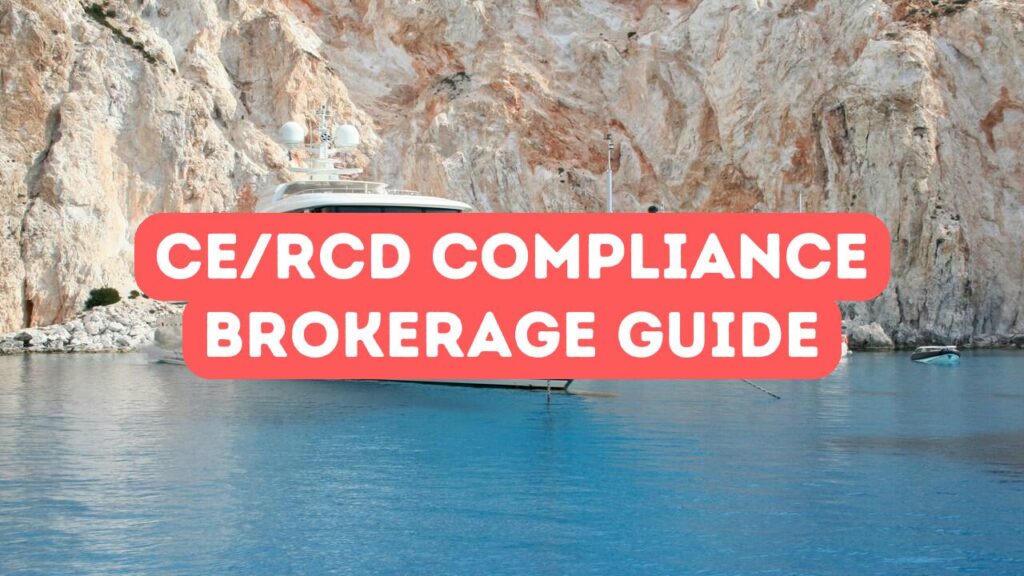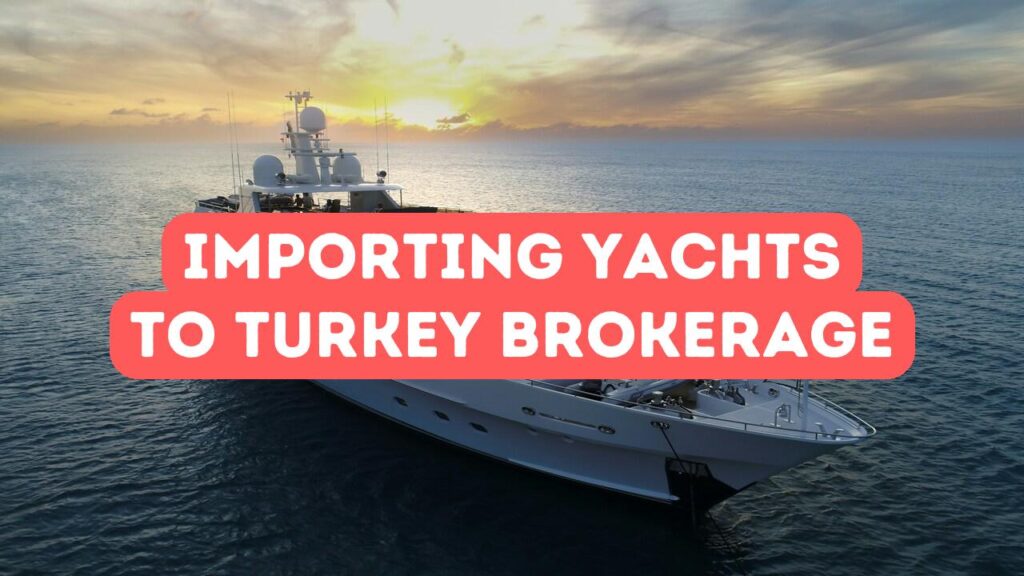Sailing the seas with a newly imported yacht is a dream many covet, but CE compliance and RCD regulations might feel like a storm you’re not ready to weather. Don’t fret; the horizon is brighter than it appears. This yacht compliance guide shines a beacon to help you navigate these crucial waters. For yacht brokers, understanding CE compliance yacht details and RCD regulations yacht rules can be the wind in your sails, ensuring smooth transitions when handling yacht brokerage imports. Importing yachts frequently requires a keen eye on these standards—it’s about getting your vessel ship-shape and setting sail without a hitch. Imagine your yacht gliding into that perfect harbor, every legal box ticked. That’s the power of informed compliance. Here, you’ll find the knots untangled, and the path clear, so you can focus on what truly matters: sailing your dream yacht into the sunset, not drowning in paperwork.
Understanding CE/RCD Regulations for Yacht Imports
Navigating CE compliance yacht protocols is like mastering a new sea chart. For those diving into yacht brokerage imports, understanding RCD regulations yacht details is crucial. These regulations ensure yachts meet safety, health, and environmental standards before they grace international waters. It’s similar to giving your ship a passport, detailing its ability to travel freely while adhering to local laws. Importing yachts frequently requires paying close attention to these codes, as non-compliance could leave your vessel docked indefinitely. A detailed yacht compliance guide can be your compass, unlocking smooth transactions and avoiding stormy disputes. Whether it’s the hull’s structure or engine emissions, overlooking even the smallest regulation can lead to significant setbacks. So, harness the power of knowledge, set your sails right, and let understanding propel you confidently into untroubled waters. Remember, a well-informed captain is never lost.
CE compliance yacht protocols serve as the safeguard for anyone venturing into yacht brokerage imports. Picture RCD regulations yacht requirements as your vessel’s lifeline, ensuring every yacht sails smoothly across borders, unhindered. The layers of rules wrapped in categories like fire safety, stability, and construction standards are there to uphold quality on international seas. Consider the CE mark your golden ticket, a testament to your yacht’s readiness for the open waters. Importing yachts frequently isn’t just about moving a vessel from point A to B; it’s about integrating seamlessly into the maritime tapestry. Those who embark on this journey need a solid yacht compliance guide, ensuring nothing slips through the cracks. With knowledge and diligence, even the most complex compliance process becomes a manageable task. Let each regulation be a stepping stone, not an obstacle, guiding your illustrious voyage from one horizon to the next.
Understanding CE/RCD yacht regulations involves embracing the intricate yet essential checks your vessel must pass. Imagine reading a meticulous nautical log detailing each expectation; completion turns bureaucracy into freedom. CE compliance yacht protocols and RCD regulations yacht criteria are akin to thorough pre-sail inspections, designed not just for adherence but for assurance. Think of your yacht compliance guide as a reliable lighthouse, illuminating potential pitfalls and paving the way for successful yacht brokerage imports. It’s not just a process—it’s your guarantee of respect and readiness on every wave you cross. Importing yachts frequently demands your scrutiny at every step, ensuring no hidden sandbars disrupt your legal journey. When undertaken correctly, the procedures become your anchor, holding you confidently in quality’s harbor. So, delve into these standards with a fervor; they’re your steadfast companion in a world where precision prevails over presumption.
Key Steps for Ensuring Compliance in Yacht Brokerage
Setting sail with CE compliance yacht foresight is akin to plotting a course before a voyage. First, delve into the RCD regulations yacht rules, the compass guiding your way. Thoroughly examine documentation; it’s your map ensuring smooth yacht brokerage imports. Each vessel imported needs a keen inspection, aligning with established yacht compliance guide criteria—no room for shortcuts here. Regular checks, much like cleaning your deck, prevent future storms. When importing yachts frequently, partner with certified surveyors as your dependable crew. They’re instrumental in steering clear of compliance pitfalls. Having a well-charted compliance strategy not only ensures a trouble-free entry into international waters but also elevates your reputation among discerning yacht enthusiasts. Each step you take is an anchor grounding your business in trust and reliability, cultivating a fleet of satisfied customers ready to embark on their maritime adventures.
To sail smoothly through the world of yacht brokerage imports, it’s essential to anchor your knowledge in compliance intricacies. Start with scrutinizing official documentation to verify the yacht complies with CE compliance yacht standards. Attention to detail here saves time and turbulence later. Next, engage skilled professionals who are fluent in RCD regulations yacht terminology. Their insights are invaluable, much like a seasoned captain on uncharted waters. Creating a robust yacht compliance guide tailored for your brokerage ensures that each yacht not only meets but exceeds expectations. With each tick on the checklist, you’re building a sturdy vessel of trust, ready to withstand the waves of challenges in importing yachts frequently. By fostering diligence and precision, you pave the way for a seamless brokerage process, transforming potential storms into gentle breezes on your voyage to success.
Sailing the seas of yacht brokerage imports requires a steady hand and a keen understanding of CE compliance yacht requirements. Begin with a comprehensive yacht compliance guide that serves as your blueprint, outlining every necessary step. Prioritize RCD regulations yacht standards by integrating them into your brokerage workflow, ensuring each vessel meets the mandated criteria. Importing yachts frequently demands more than just a checklist; it requires meticulous attention to detail with every hull inspected and certified. Surround yourself with a crew of experienced surveyors whose expertise acts as a lighthouse, guiding you past the rocks of non-compliance. Every voyage starts with diligent preparation—by cementing your processes in transparency and precision, you’ll not only meet expectations but redefine them, setting the pace in this competitive sphere. This proactive approach not only protects your investment but also fosters trust among clients, building a legacy of excellence and reliability.
Navigating Legal Challenges: CE/RCD Certification Demystified
Navigating the legal seas of yacht ownership requires more than just seaworthy skills; it’s about understanding the crucial elements of CE compliance and RCD certification. Picture deciphering these regulations as having your own compass. These standards are not mere hurdles but essential checkpoints ensuring your vessel’s legitimacy. Yacht brokerage imports hinge on these clear-cut rules, making sure your craft meets every requirement of the yacht compliance guide. RCD regulations yacht obligations call for careful attention, aligning each imported vessel with the meticulous standards of safety and environmental norms. Importing yachts frequently becomes less of a tempest and more of a steady course when these guidelines are clearly followed. Embrace this knowledge, and let it be the anchor holding your peace of mind, ensuring smooth seas ahead as you sail confidently towards your next adventure.
CE compliance yacht essentials can seem like navigating uncharted waters, yet understanding them transforms challenges into stepping stones. Every yacht broker knows that RCD regulations yacht standards are not just paperwork but the backbone of vessel safety and legality. Imagine CE and RCD compliance as the compass and map on this legal journey, guiding every yacht brokerage import to a safe port. With the yacht compliance guide in hand, complexities unravel like knots in a seasoned sailor’s grip. Importing yachts frequently doesn’t have to feel like facing a fierce gale; rather, it becomes a planned voyage through industry standards. Anchoring your knowledge here ensures that, as you face the CE/RCD certification, you’re equipped with the insights and foresight needed to master these regulatory waters. So, let this comprehensive guide be your lighthouse, steering you toward calm waters and smoother sailing.
Legal challenges with CE compliance yacht certification often resemble a complex puzzle, where each piece plays a crucial role. RCD regulations yacht compliance demands meticulous attention, defining the safety and conformity of each vessel in yacht brokerage imports. Think of the yacht compliance guide as a well-drawn chart, each line and symbol guiding the way through the regulatory tide. Importing yachts frequently requires more than just knowledge; it demands a keen understanding and application of these standards. With every step, the fog of complexity lifts, and the path becomes clear. Picture tackling these requirements as mastering the ropes on deck, each knot tied with precision. As you lean on this guide, let it empower your journey, turning any potential obstacles into mere stepping stones. This approach ensures that your yacht brokerage operations sail smoothly, avoiding legal entanglements and focusing on what truly matters—the voyage itself.
Disclaimer: This article is for general informational purposes only and you are strongly advised to consult a professional to evaluate your personal situation. No liability is accepted that may arise from the use of the information in this article.






